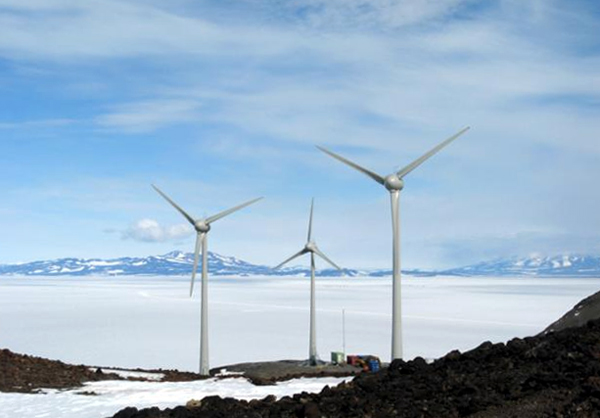Winding upNew wind farm to help power U.S., New Zealand research stations in AntarcticaPosted January 19, 2010
Electrical power generation has gotten a different spin for two Antarctic research bases. U.S. and New Zealand officials held an opening ceremony on Jan. 16 for a three-turbine wind farm recently built on Ross Island. U.S. Ambassador David Huebner and New Zealand Foreign Minister Murray McCully officiated by video link with the site from New Zealand’s northern city of Auckland. Live from Antarctica!
Check out the Antarctica New Zealand Wind Farm Web camera
U.S. Secretary of State Hillary Clinton was also scheduled to attend the ceremony in Auckland, but was called away to help deal with the earthquake crisis in Haiti. The wind farm will help power both McMurdo Station Each wind turbine can generate up to 330 kilowatts on a site called Crater Hill between McMurdo Station and Scott Base. Engineers estimate the wind farm will cut fuel consumption by about 240,000 gallons every year. Wind-generated electricity will account for up to 15 percent of McMurdo Station’s annual electricity demand, but nearly all of Scott Base’s. Currently, both stations draw all of their electrical and heat demand from diesel generators and diesel-fired boilers. Officials from the National Science Foundation Total cost of the wind turbine project was about $7.4 million, with New Zealand covering most of the cost as part of its contribution to the two countries’ shared logistics pool. USAP personnel upgraded roads and transported equipment to Crater Hill, as well as conducted site surveys and provided various supplies and equipment, to support the construction. If deemed successful, the wind farm may be expanded in other areas around Ross Island to further reduce McMurdo Station’s reliance on fossil fuels.
|



For USAP Participants |
For The Public |
For Researchers and EducatorsContact UsU.S. National Science FoundationOffice of Polar Programs Geosciences Directorate 2415 Eisenhower Avenue, Suite W7100 Alexandria, VA 22314 Sign up for the NSF Office of Polar Programs newsletter and events. Feedback Form |


